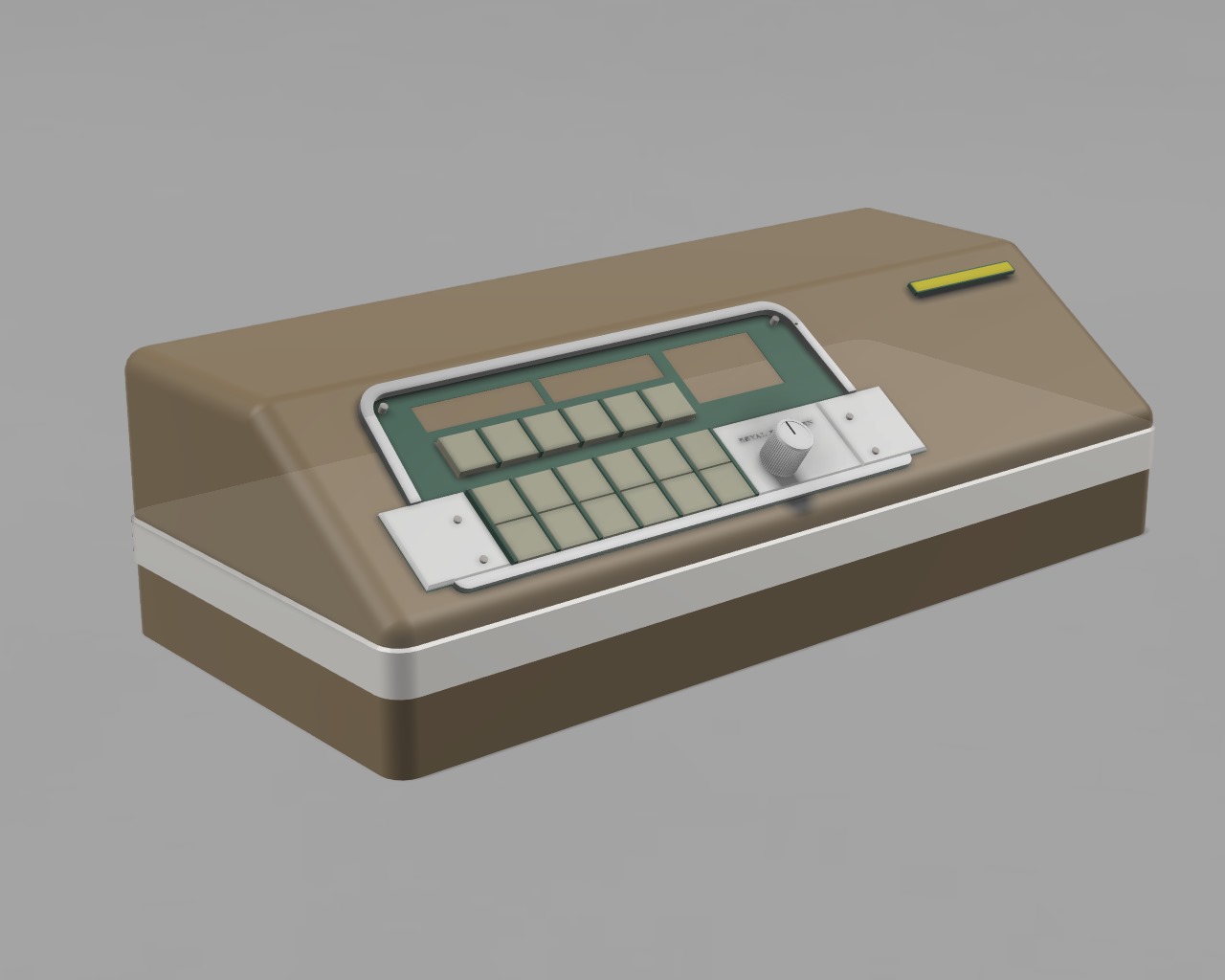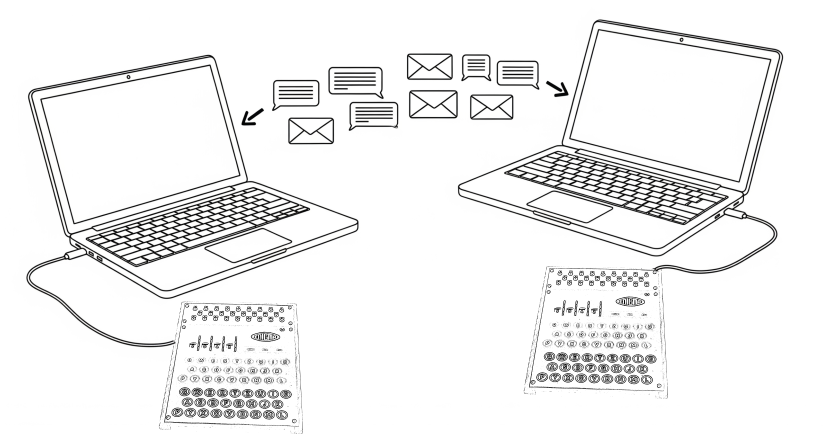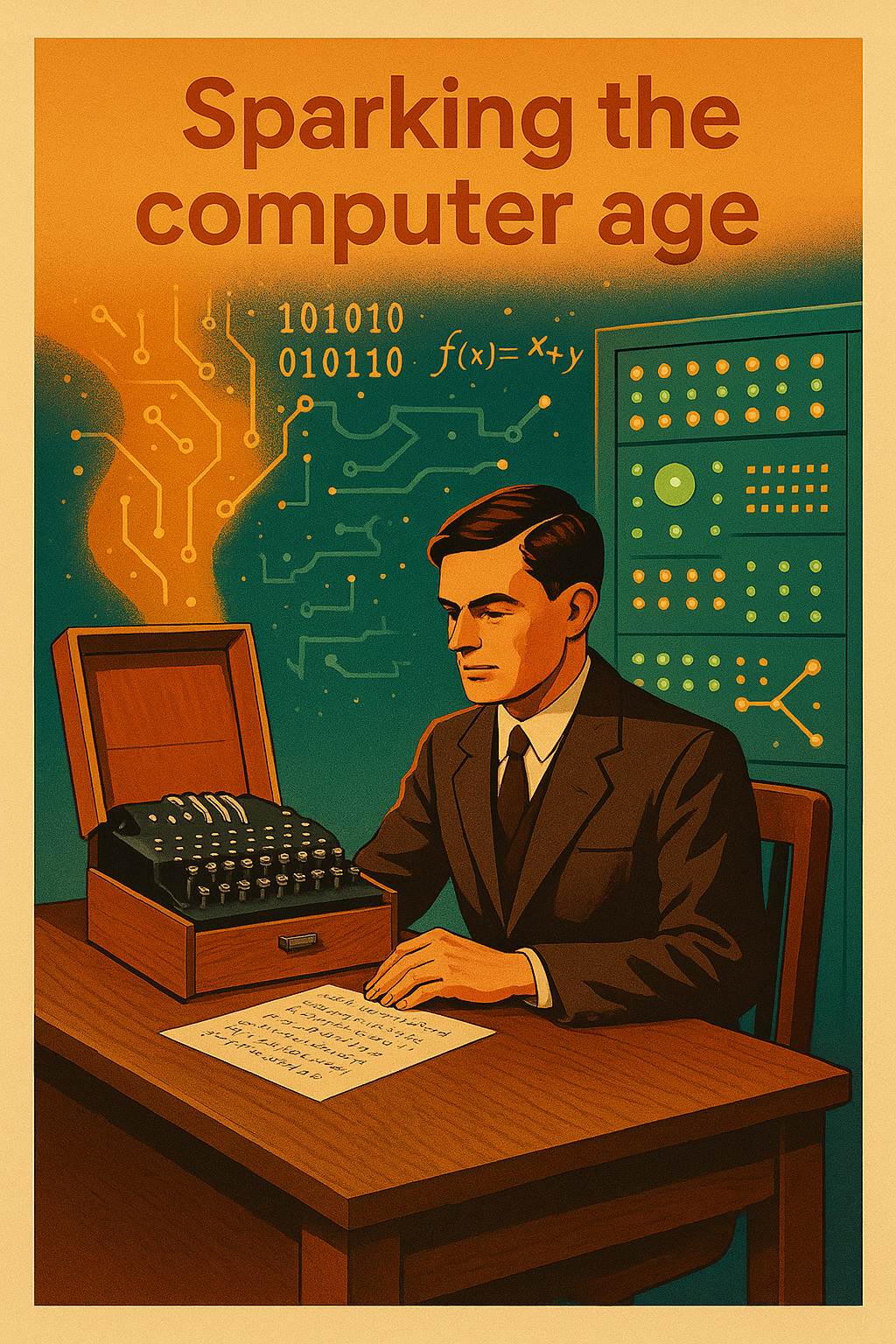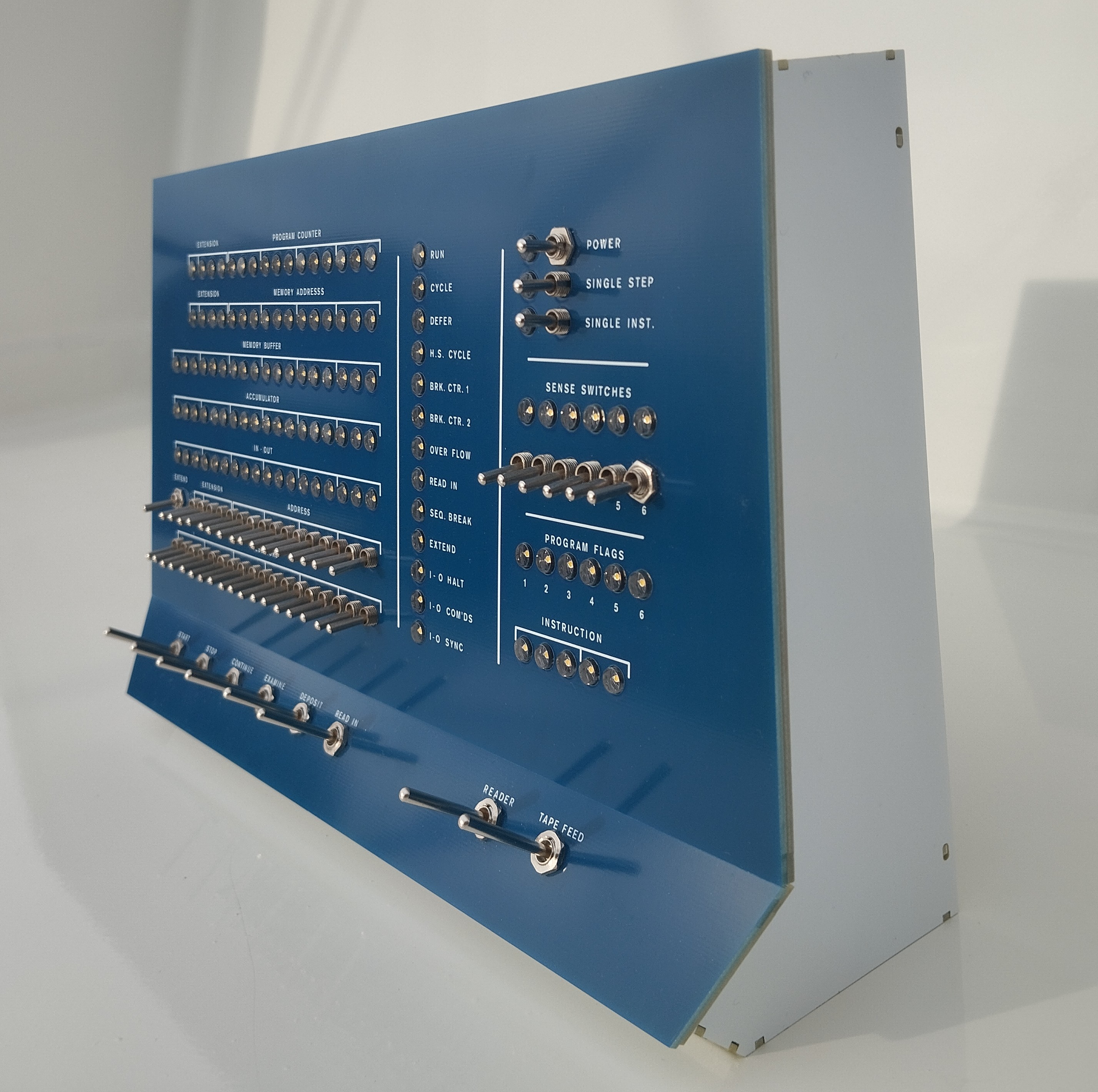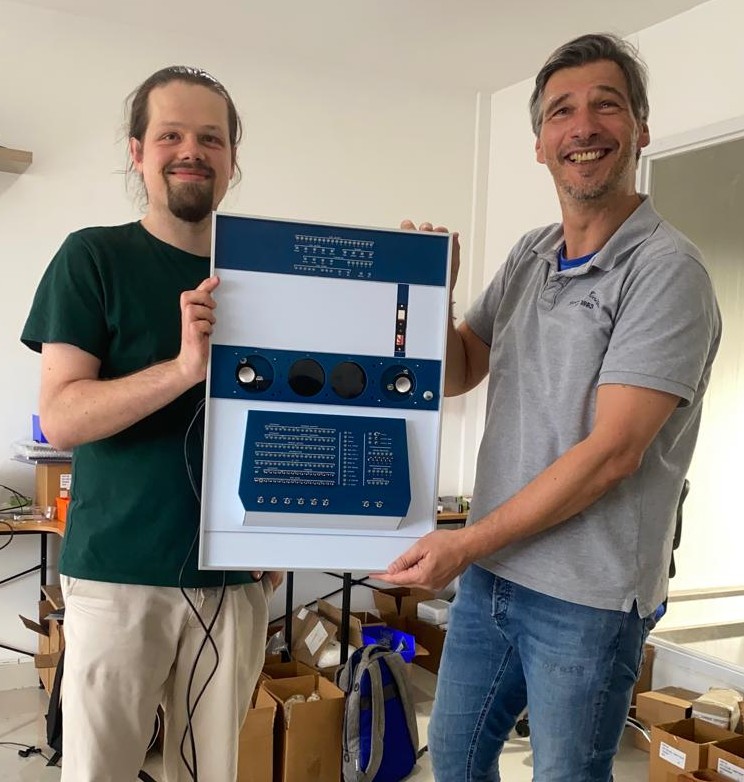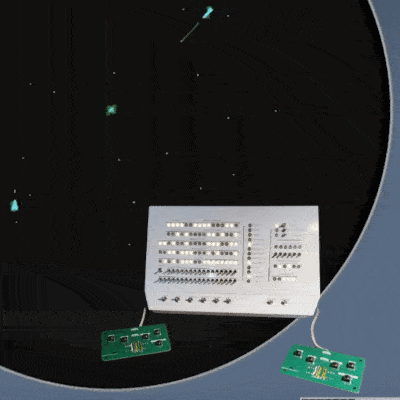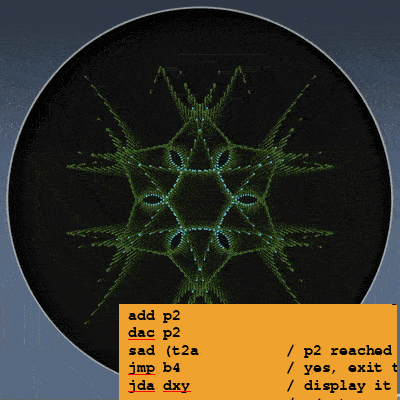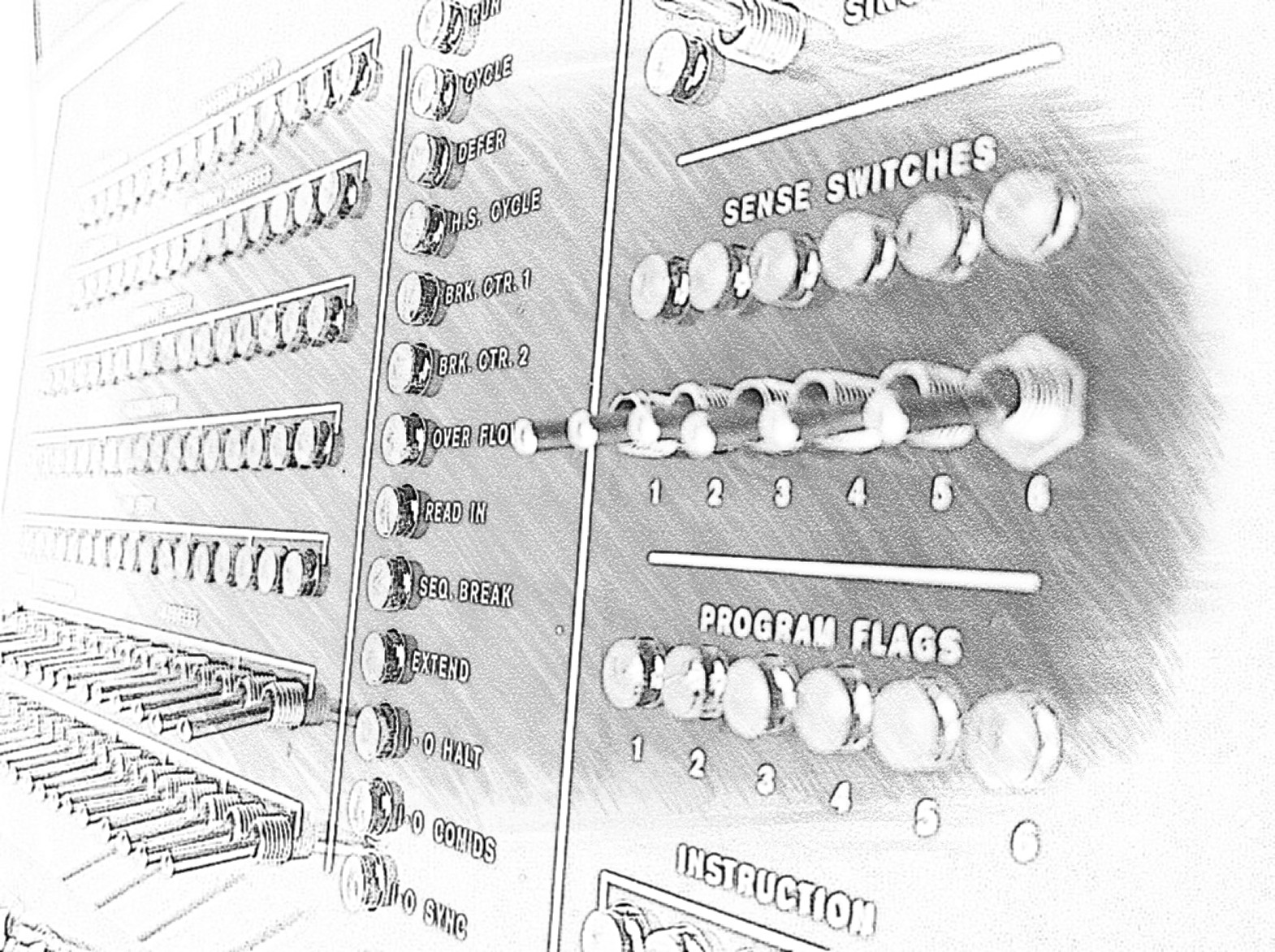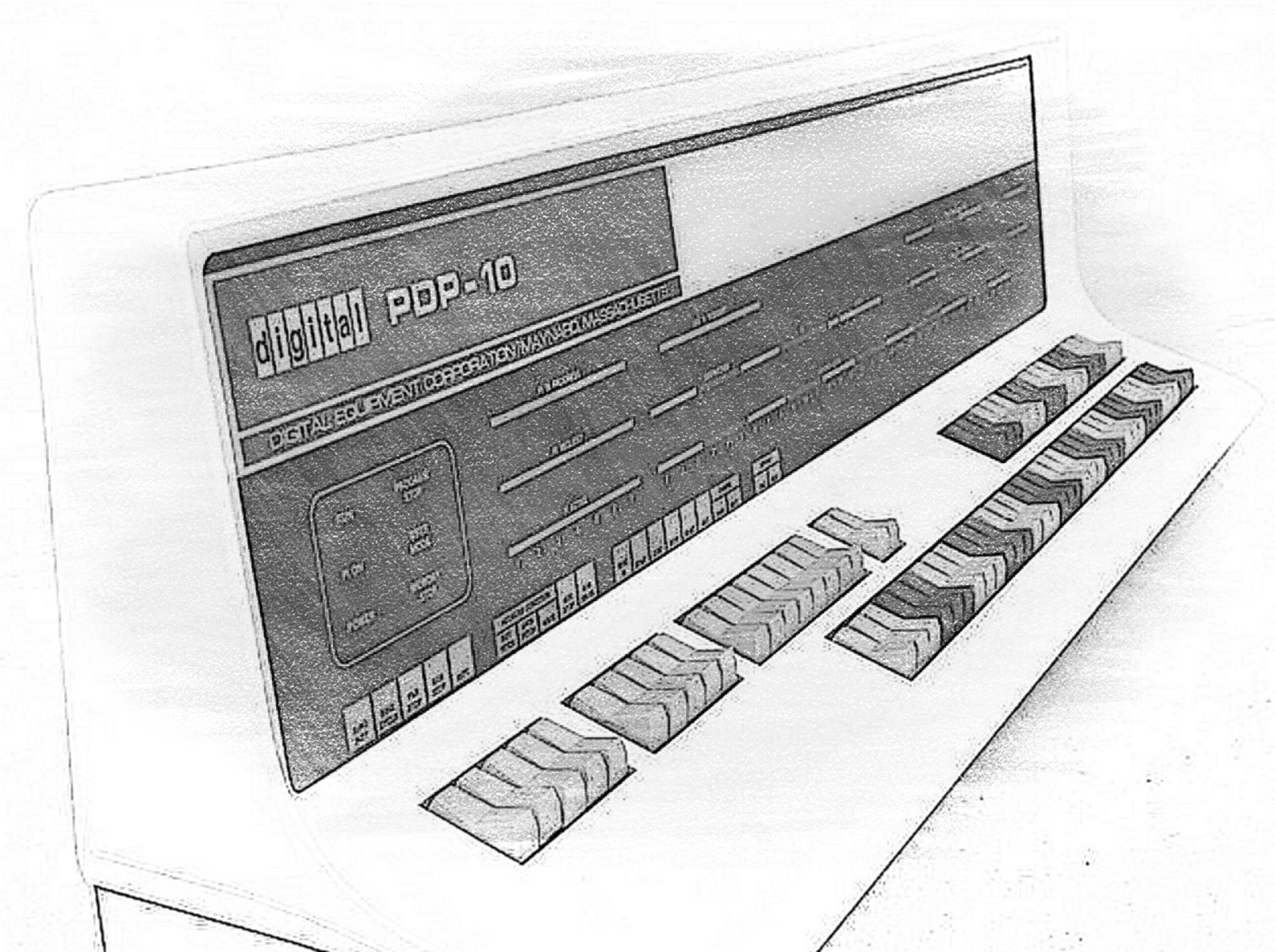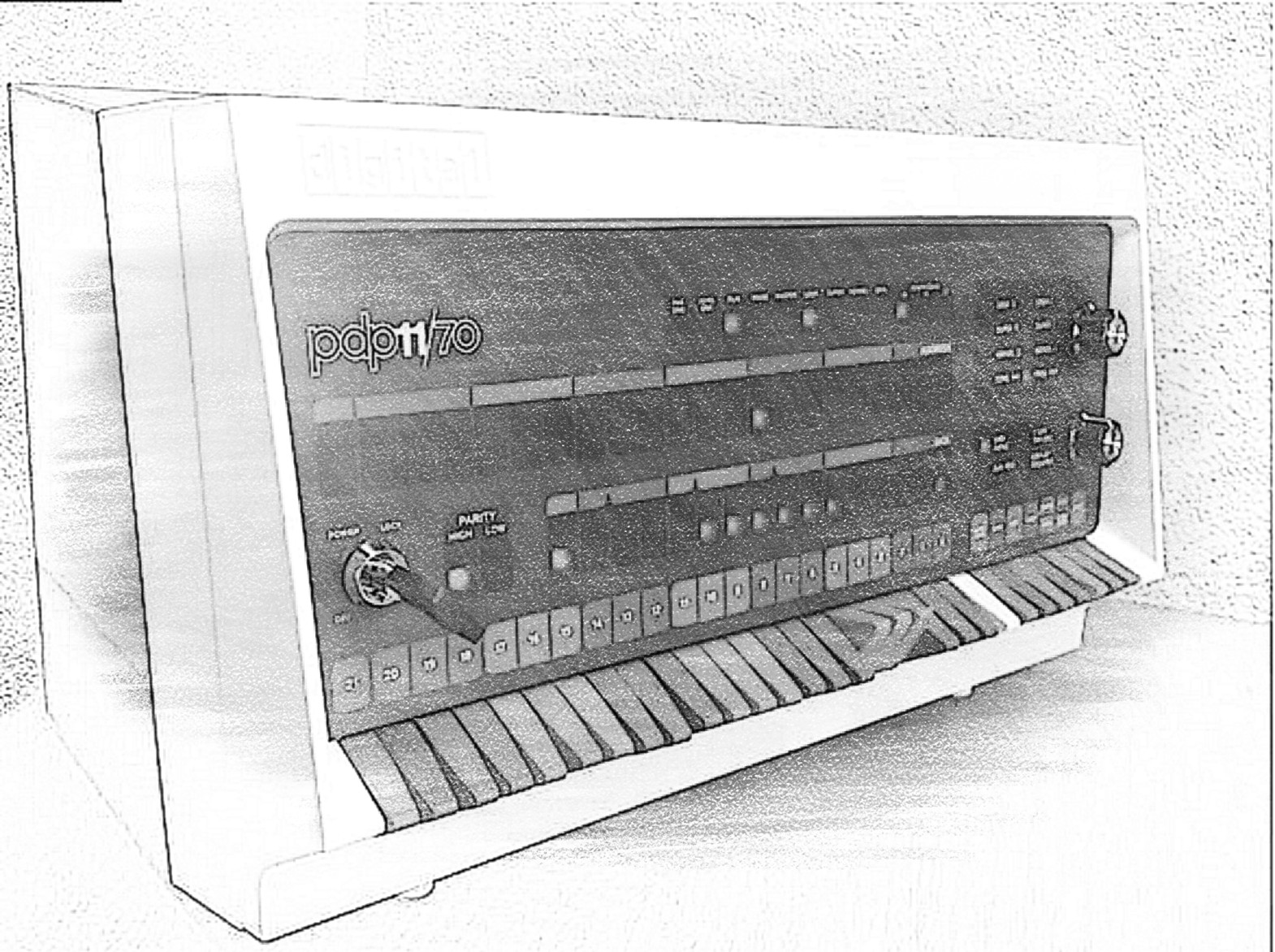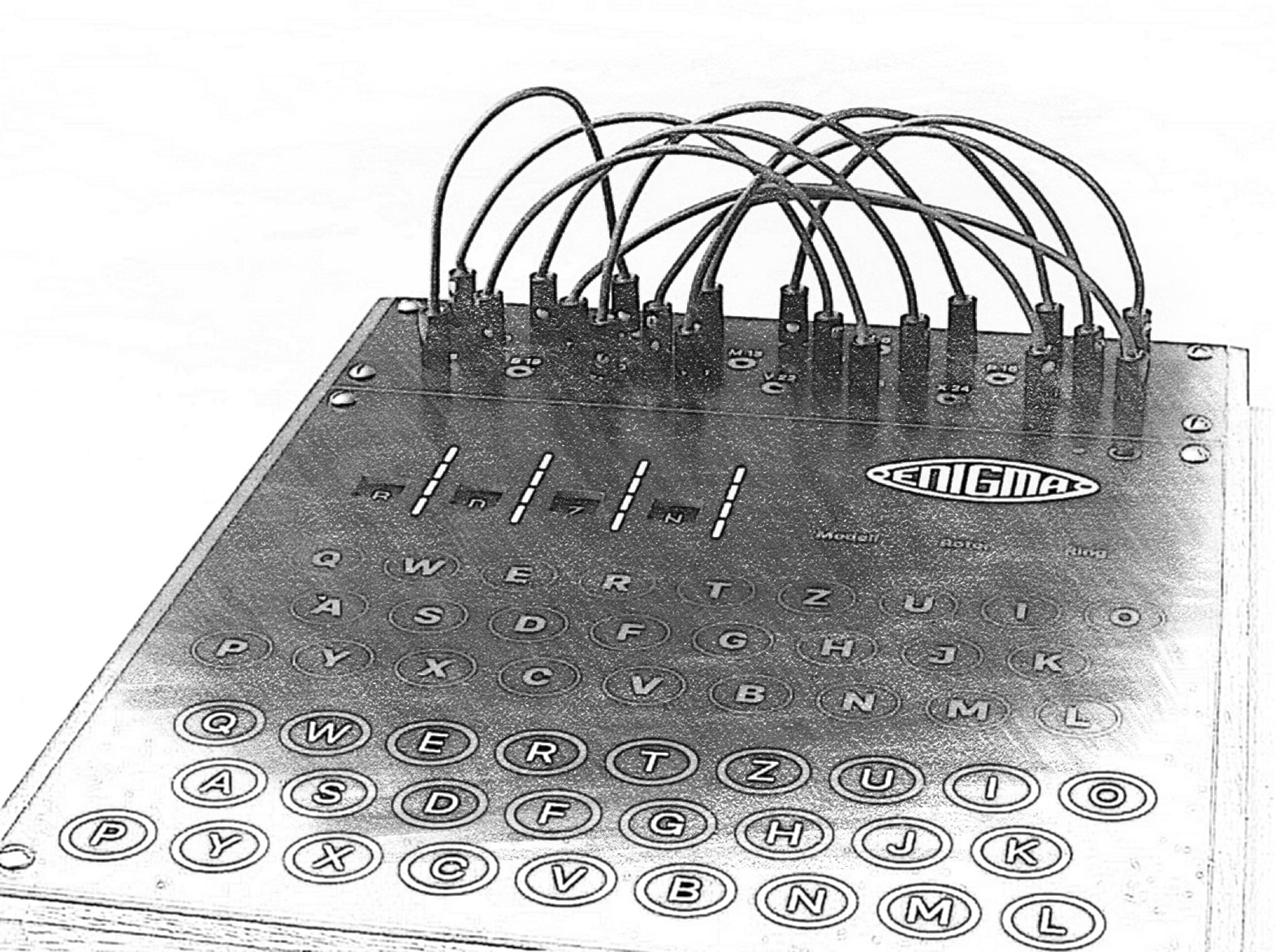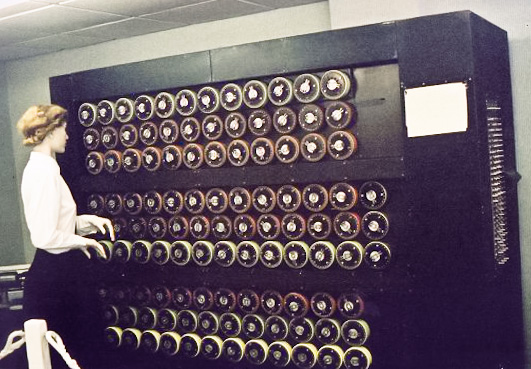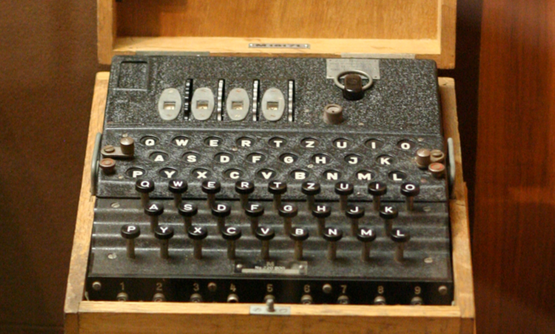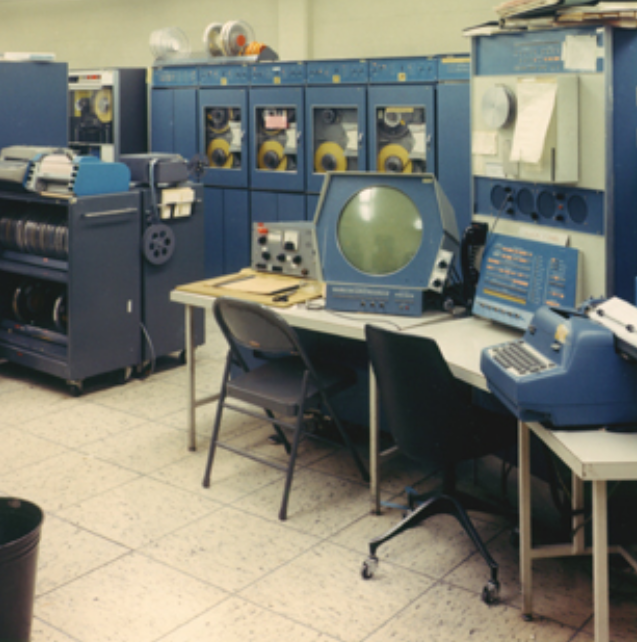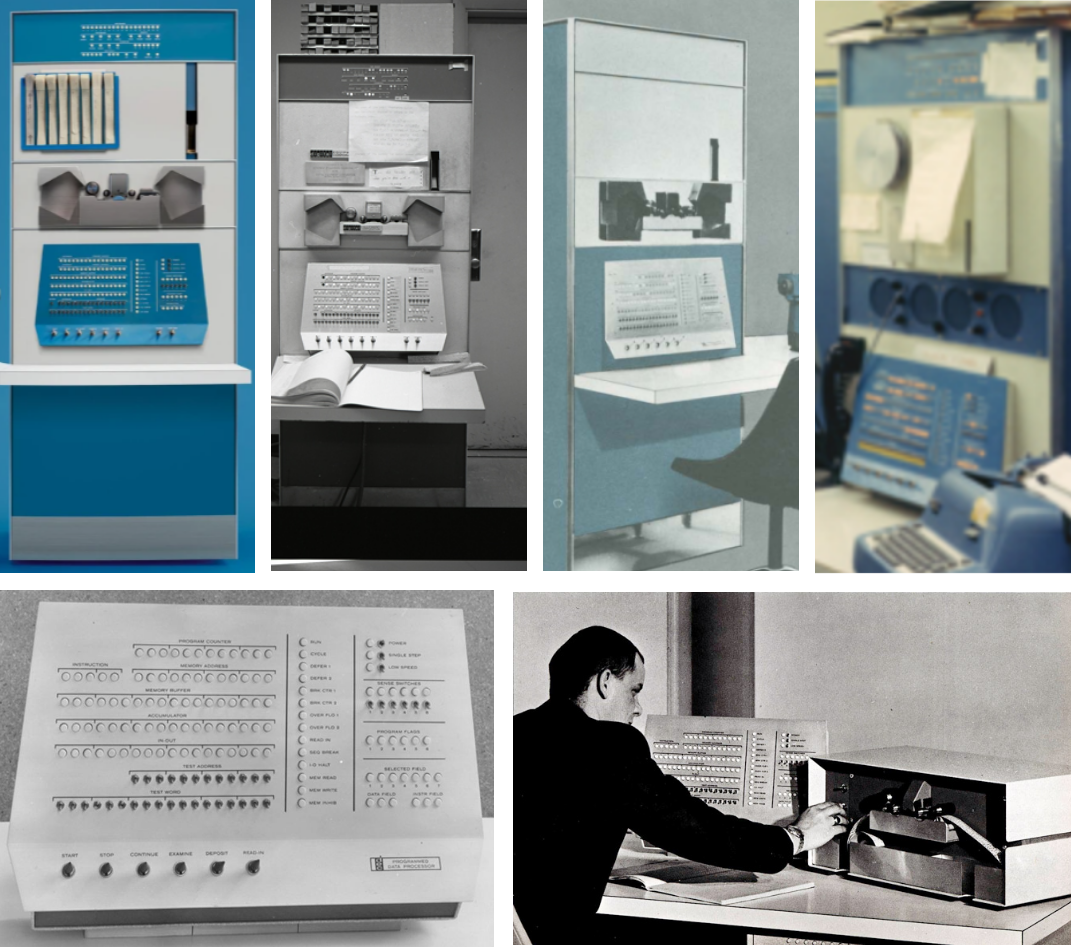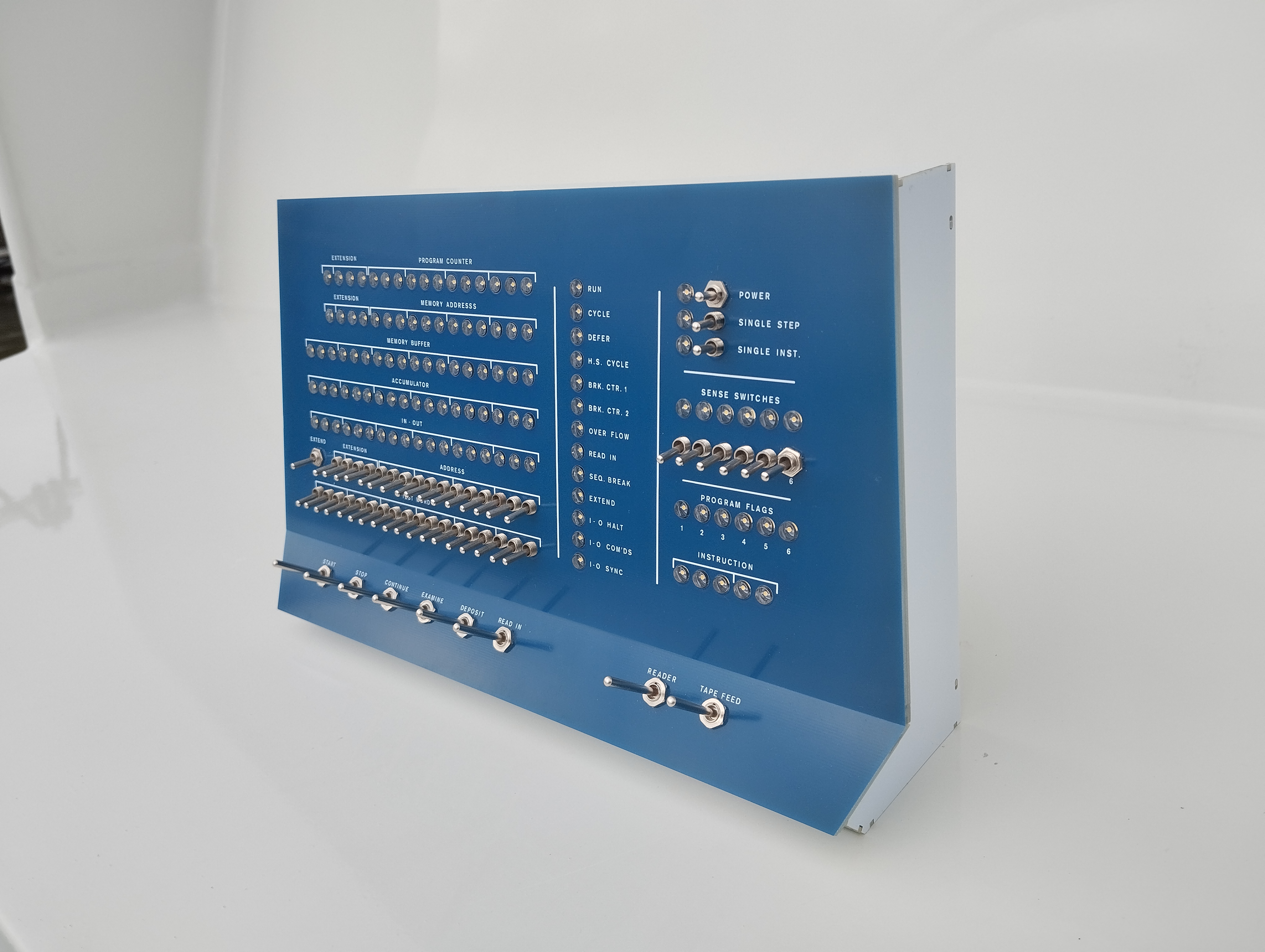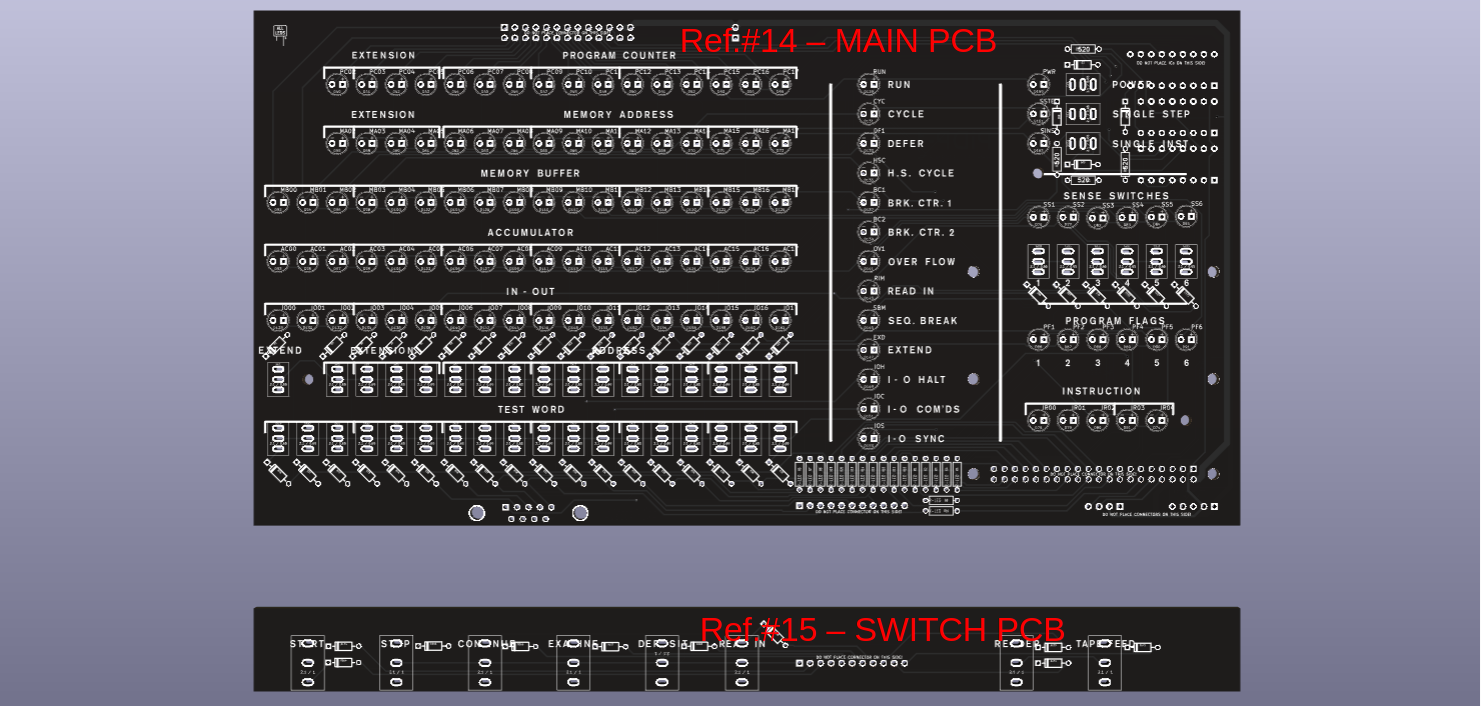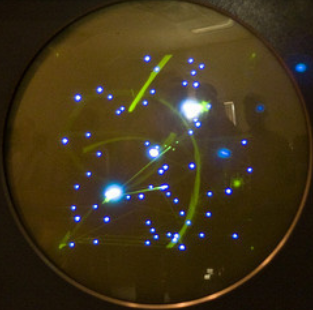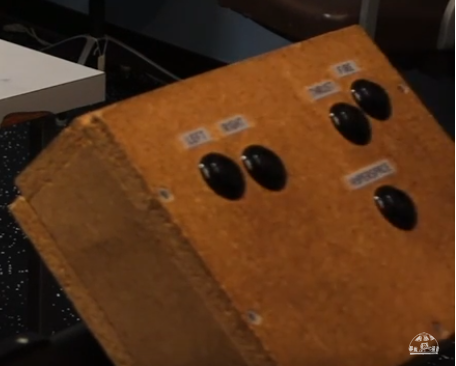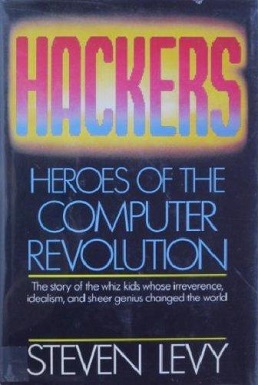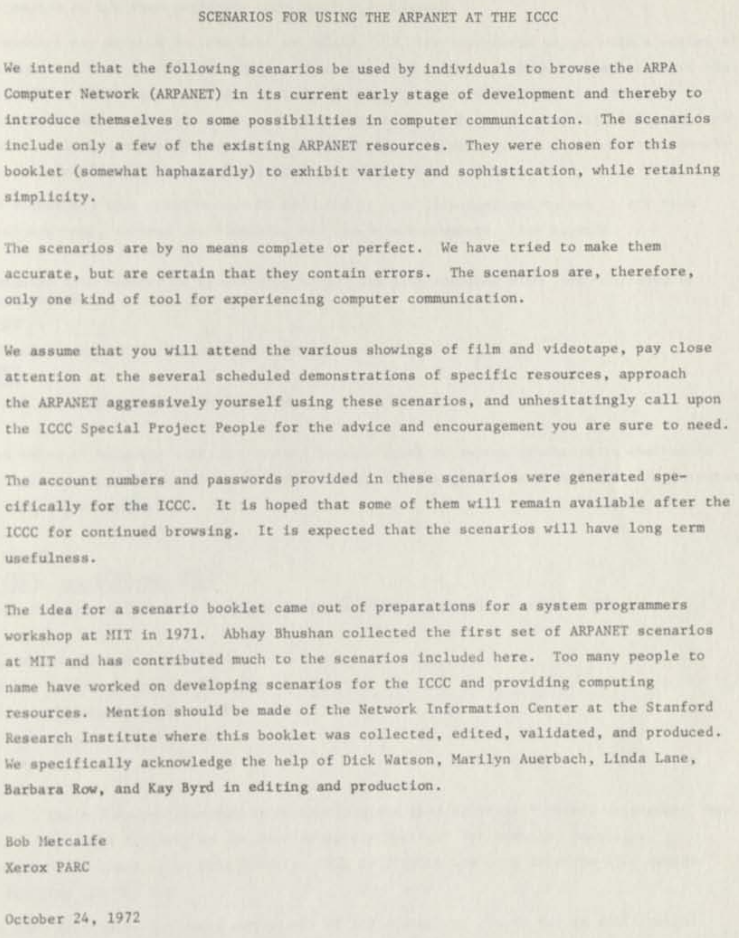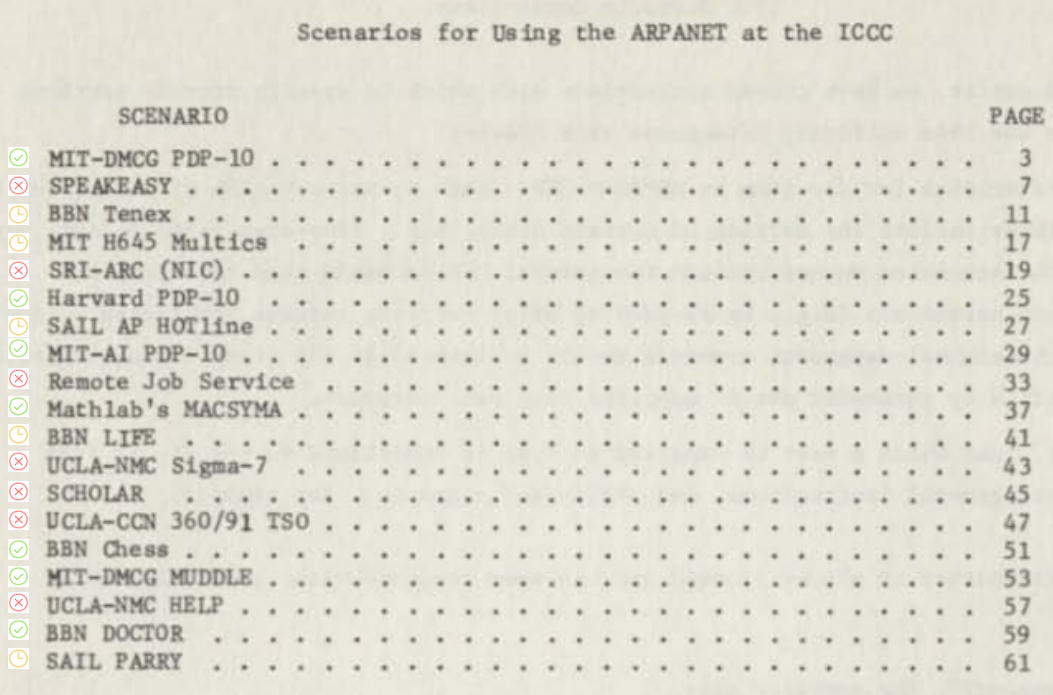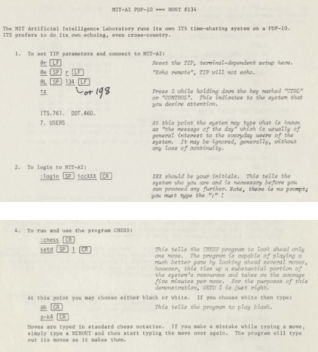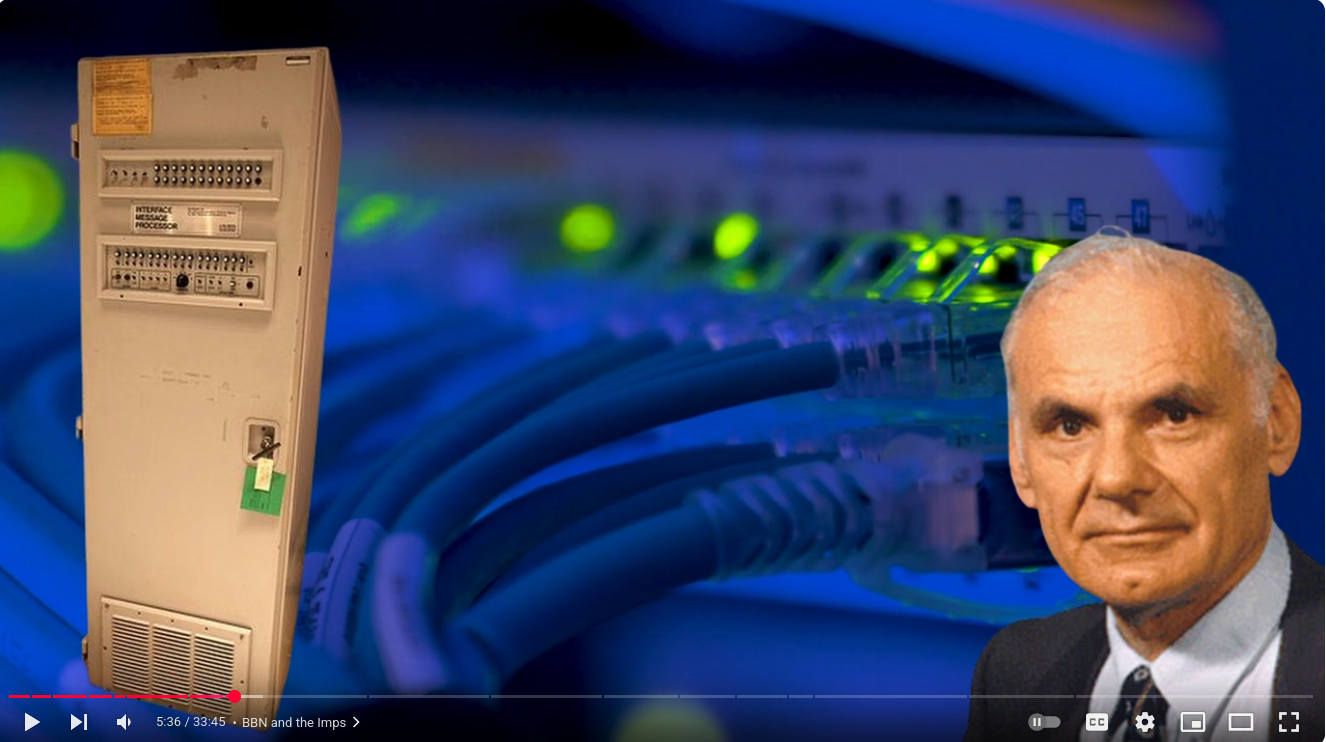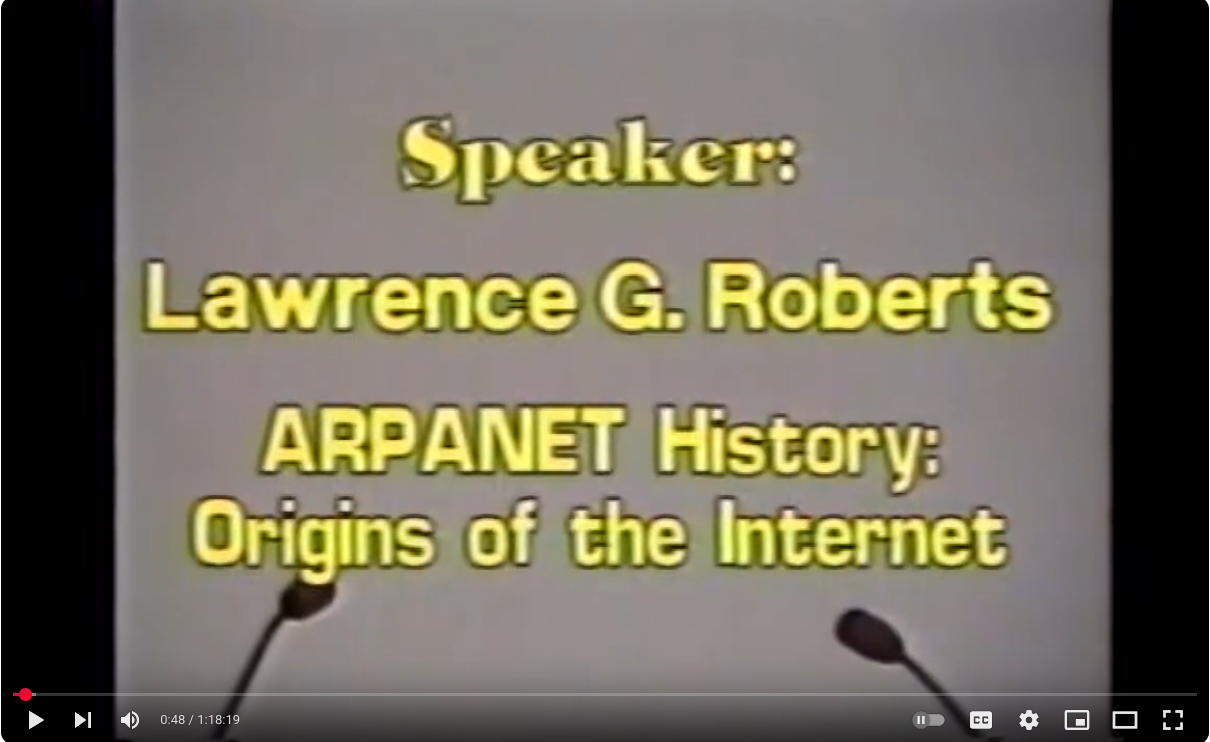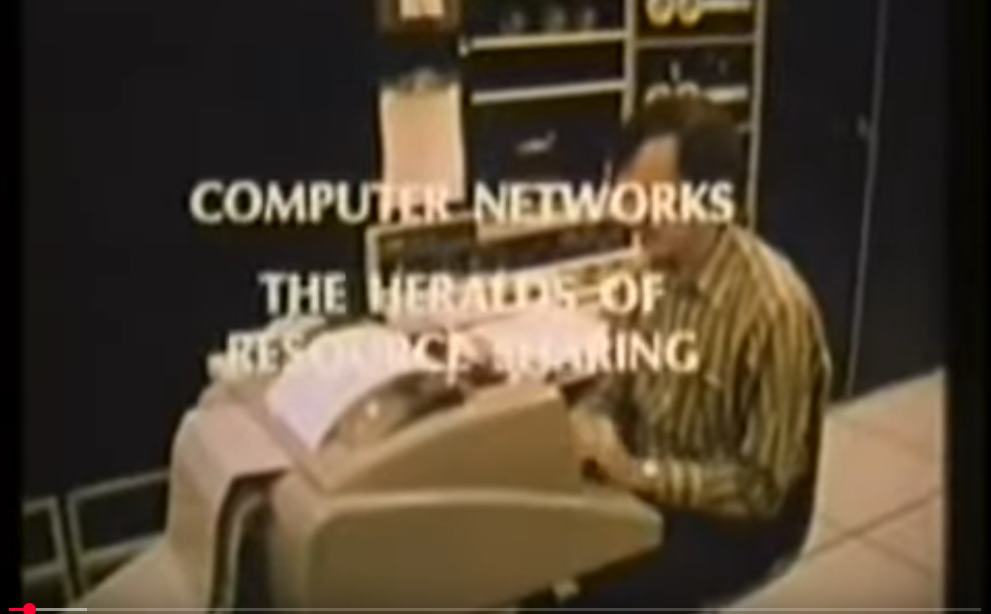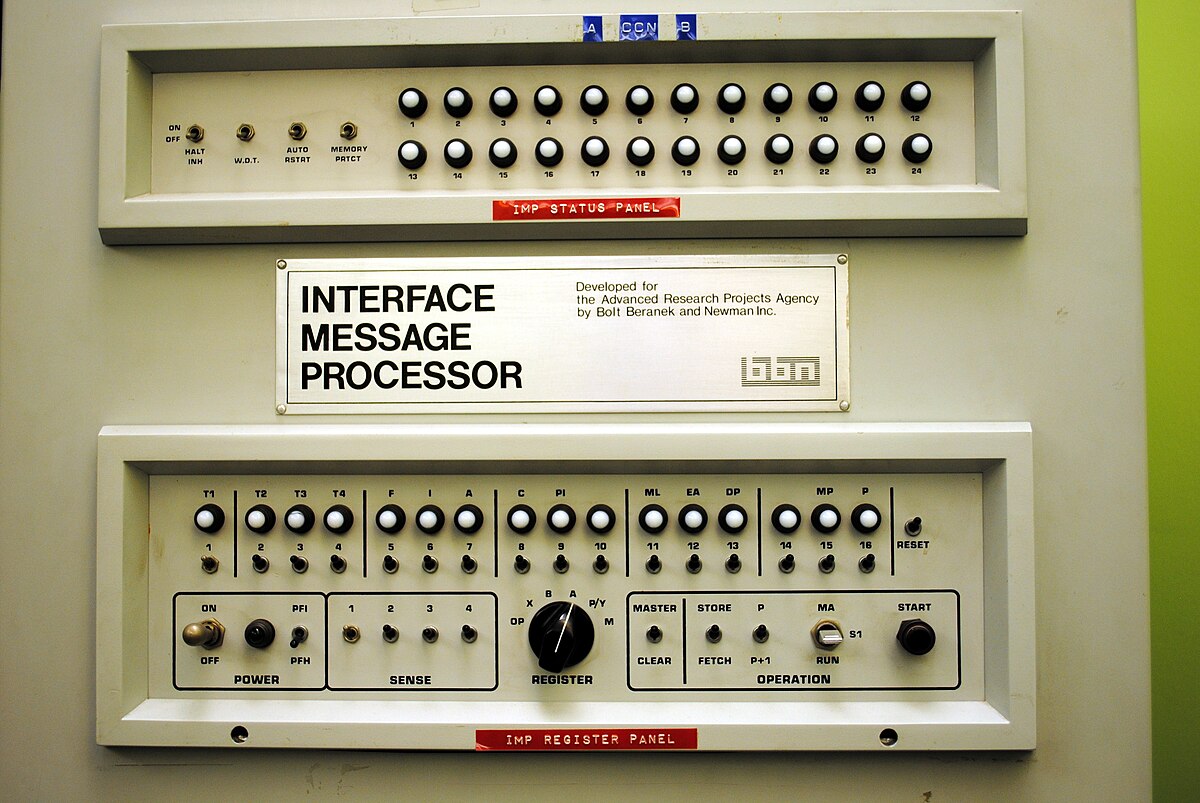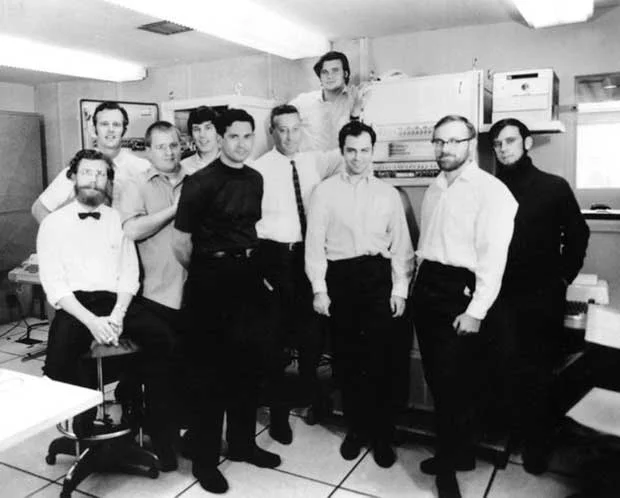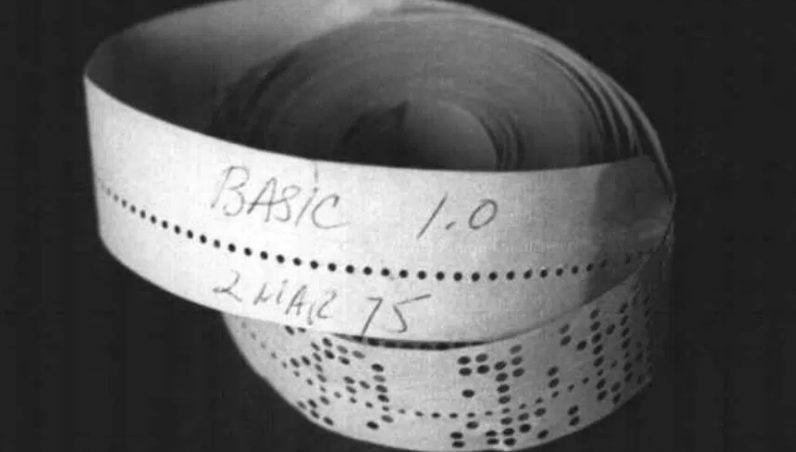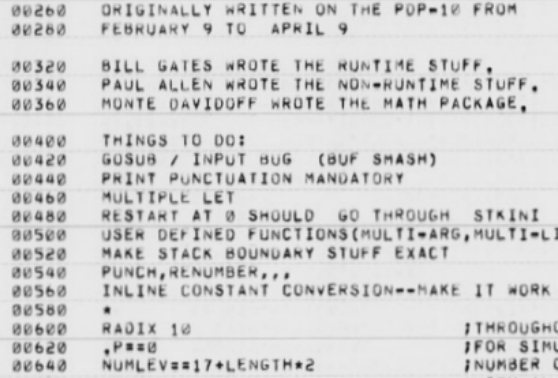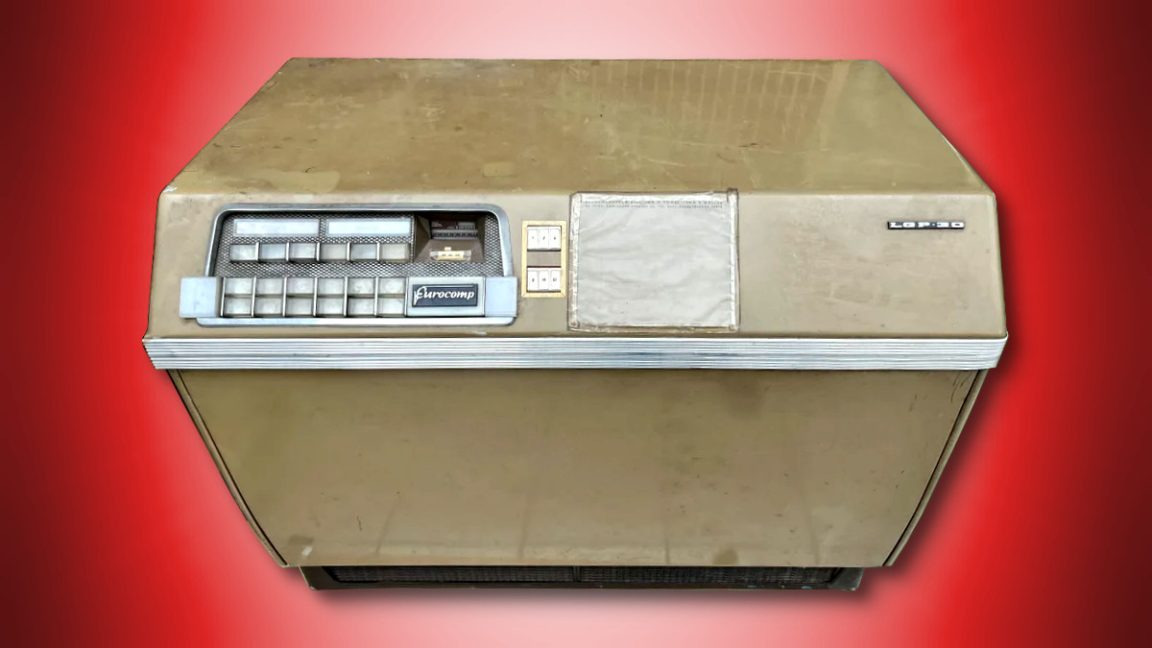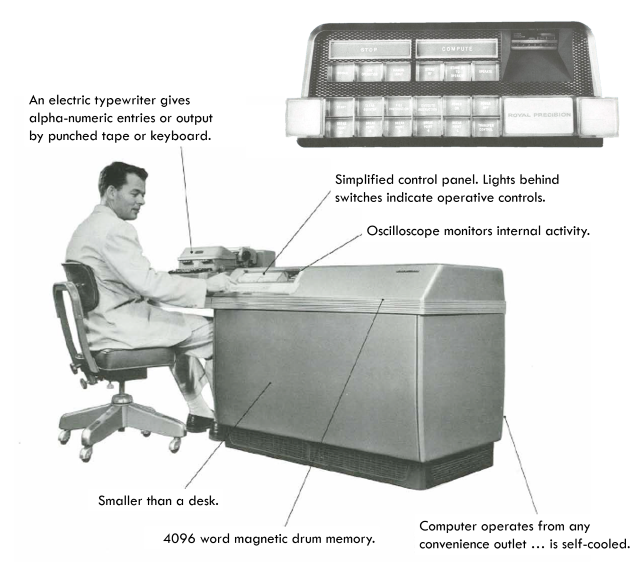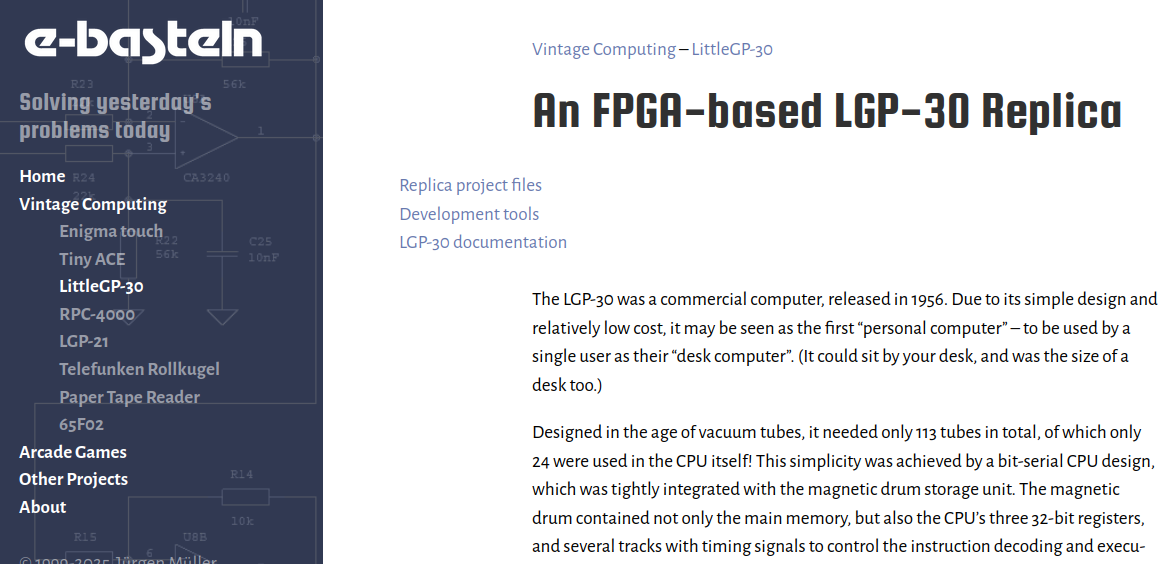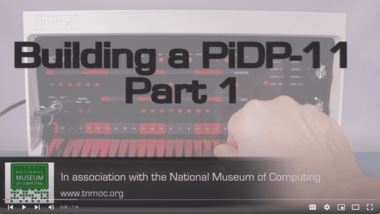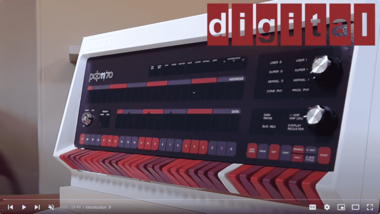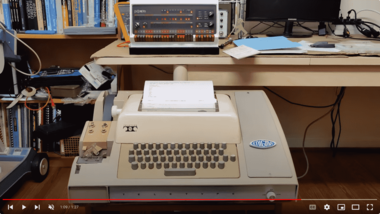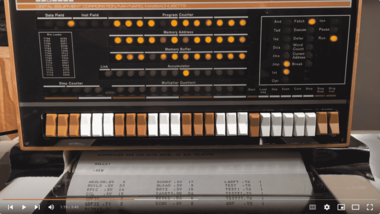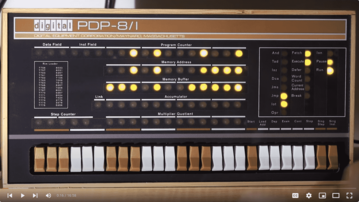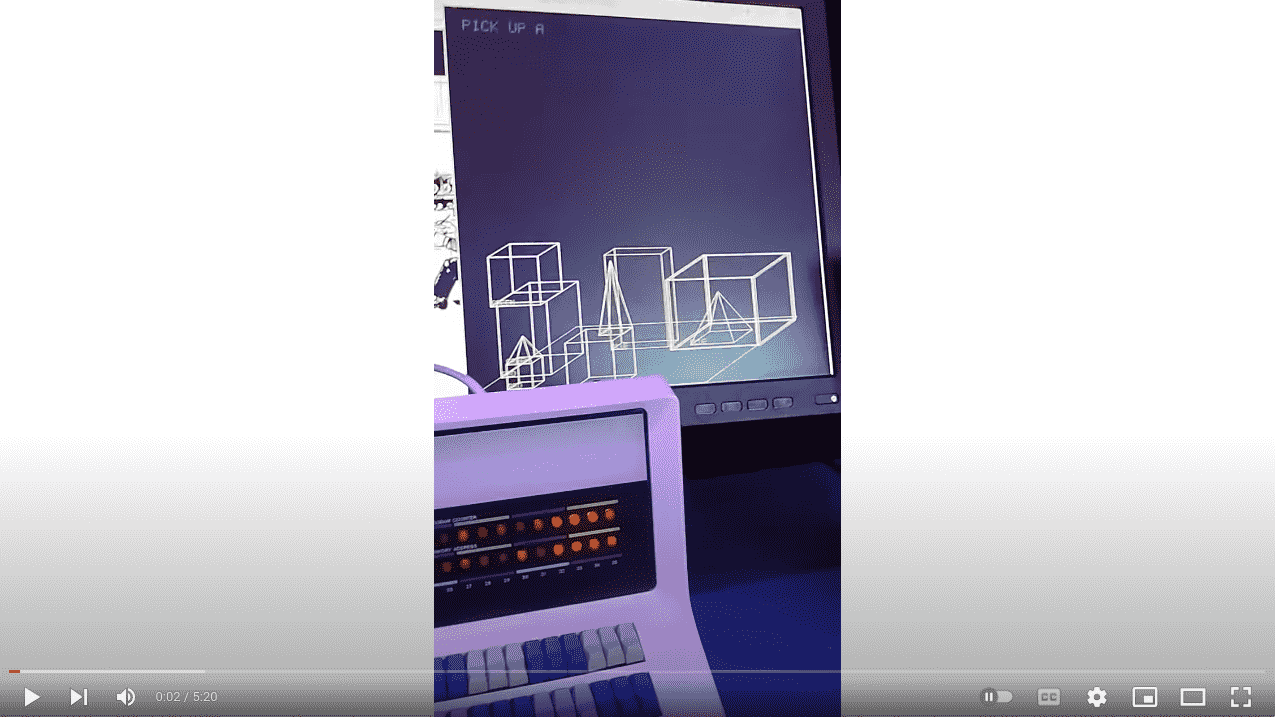Obsolescence Guaranteed Newsletter
July 2025
Contents:
The Enigma touch | Finally, the PiDP-1 | ARPANET Reconstruction Project
Relive Micro-Soft Basic’s birth on the PDP-10 | PiDP-8/11 Software updates
The LGP-30’s third coming
We had a good intention to make the Obsolescence newsletter a quarterly thing, but semi-annual proved more realistic. But not for a lack of news. Last month, Jürgen Müller’s Enigma touch came out. And we now dare to confidently announce the PiDP-1's arrival within weeks.
The Arpanet Reconstruction is another project to which we’d like to draw your attention. Following after his reconstruction of the PDP-10 ITS operating system, Lars Brinkhoff has managed to bring up a surprising amount of the Arpanet as it stood in 1972. We hope to draw in some enthusiastic volunteers by describing the project’s progress.
For 2026, we’re working on a LGP-30 replica. Jürgen Müller updated his FPGA-based LittleGP-30 from a few years ago, and we’re designing an authentic 1950s metal case. And lastly, it looks like four of us will focus on a Whirlwind replica.
About Obsolescence Guaranteed: ‘we’ are a unorganised group of computer history hobbyists, recreating historical computers from before the microprocessor era. It was a kitchen table project for many years, but since 2022 we have CEDS as a micro-factory to handle logistics. If you would like to join in, or have a replica design you’d want to bring out: just let us know!
The Enigma touch
Jürgen Müller finished his very atmospheric Enigma replica. You can order it from the new project page: obsolescence.dev/enigma-touch.html.
Built on just a single PCB, the Enigma touch is thin enough to hang it on a wall; mounting holes are provided if you want to take this literally. The front, with its capacitive keyboard, sliders and graphic displays which let you "rotate the wheels", does a credible job at conveying the Enigma look and feel -- helped by the recorded audio samples from an original machine.
The transparent back reveals the utterly solid-state construction – just electronics, no moving parts. A standard $10 or so LiPo battery can be plugged in if you want to operate the Enigma touch without its USB cable; but the USB connection also allows for cut-and-paste delivery of messages through your computer. It’s a reasonably secure handheld cipher peripheral for your laptop, so we have two-pack Enigma sets available for – reasonably secure communication with friends.
So the Enigma touch hardware is done, but we'll develop more activities around it. The usual Google Group, but also an encrypted public message exchange, code-breaking challenges (a replica Enigma needs a simulated bombe for code-breaking), code book generators etc. Although – the current page already provides links to many such items. To get things going, we just created an Enigma touch Google Group (link).
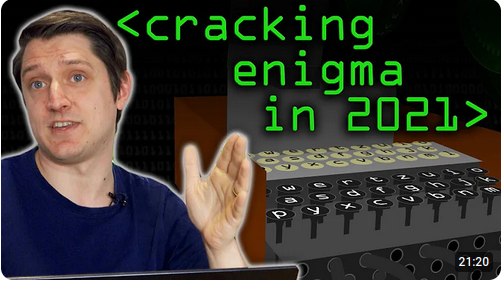
Jürgen decided to make the Enigma Touch not as a kit but assembled & tested; its form factor would be disrupted by through-hole electronic parts. When you hold the machine in your hands, we think you’ll agree that his choice for SMD is justified.
One more thing – is a replica Enigma in scope for Obsolescence Guaranteed? It's not a computer. But the picture above says it all. Enigma, Turing, Computer Science. The Enigma story is where much of this began. Besides – four of us made Enigma replicas already, so it’s obviously in scope!
Finally the PiDP-1
Angelo Papenhoff and Oscar Vermeulen started on the PiDP-1 already three years ago. But if logistics don’t throw up any more surprises, the first batch of kits is ready to go out at the end of July. So: if you are interested in the PiDP-1, please just send an email to j.leon@ceds.dev.
The long delays were mainly because along the way, we fell in love with the PDP-1 and we became more ambitious: we ended up making two versions - "Console" and "Rack-mounted". It really is an extremely fun machine. One part is its absolute minimalism: you can get to know the system down to the bone in days (with 21st century background knowledge, that is). And although it may be limited in what it can do, its Type 30 display is the perfect nice-and-simple platform for graphics demos. Driving the electron beam of the slow-phosphor radar tube only takes a few lines of code.
As we fell in love with The One, passion grew. So every kit comes with interchangeable white (Angelo insisted) and blue (Oscar insisted) front panels. Worse, we made two versions: a console-only replica in the style of the other PiDPs, but also a rack-mounted PiDP-1 to hang on the wall. Because DEC experimented with rack-mounted and stand-alone PDP-1 consoles, we felt that was excusable. Perhaps, appropriate. In fact, necessary.
The console and rack versions use the same software and circuit board.
The rack version is just a superset of the console kit: it includes the console-only case too. The idea being that you can have a full-glory PDP-1 rack hung on a wall in your study, but still bring it with you on holiday, if you must go on holidays.
Perhaps that reveals our personal needs and sentiments more than anything else, but that’s how it came about.
Even though the hardware is now done, we’re not at all finished with The One. Four of us have started work on a accompanying book.


To get things going, we just started a
PiDP-1 Google Group (link).
A few new games have already been written for the PDP-1 in the 21st century; we want to make that easier with the book we’re writing. And for those who do not like the concise assembly language of The One, we’ll be releasing a B cross-compiler too. A historically beautiful back port of the PDP-11 predecessor of C, which suits the One quite well, surprisingly.
Perhaps it’s naive to think so, but there’s nothing bad about naivety: we think that young people (perhaps with their dads) really can have meaningful educational fun playing with a PDP-1! So we put (historically appropriate) spacewar game controllers into each kit. After all, the first computer videogame ever spawned the first game controllers ever on the PDP-1. Nothing wrong stating a PDP-1 was the very first games console… So we have great ambitions with the PiDP-1 over time.
But we start at the end of the month with a batch of 200 kits for early adopters to gain feedback and improve the software. The hardware is final, but the software will grow rapidly in the first months after release. There are two ways to operate the machine:
- on the built-in Raspberry Pi alone, with an on-screen type 30 display, Soroban TTY and paper tape visualisation;
(and you can slot a 7" Pi HDMI display behind the middle two speaker bars to act as paper tape and Type 30 demo windows - if you want) - remotely over wifi, providing the same but adding an IDE with cross assembler, debugger and other developer comforts.
Last but very much not least: we owe a lot to the PDP-1 restauration team at the Computer History Museum, especially Bob Rosenbloom and Lyle Bickley. Who supplied any measurement on their PDP-1 we asked them for with great understanding. Thank you both for your endless patience dealing with what to you must have seemed irrelevant questions!
ARPANET Reconstruction
Lars Brinkhoff has been working on a truly amazing project: to bring up a faithful replica of the Arpanet as it was circa 1974. He’s been documenting his progress here (link). We’re reporting on this as fans, alas – not as contributors. It’s Lars.
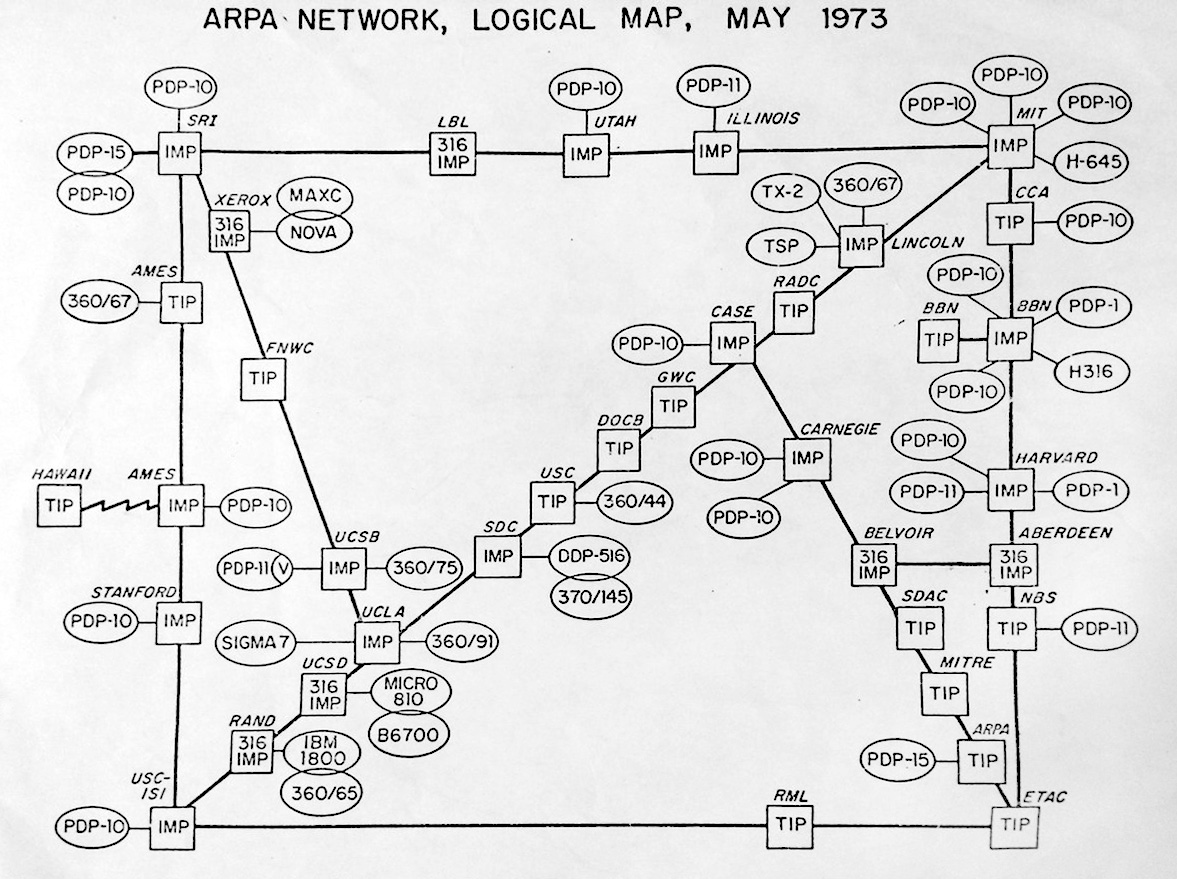
But the Arpanet infrastructure still needed to be done. An IMP simulator has existed for a long time. But getting them to really work, talking to each other on one end and talking to their host machines on the other, remained troublesome. A breakthrough came four months ago, when Lars’ emulation effort first linked up a Stanford PDP-10 running the WAITS operating system with a PDP-10 running MIT’s ITS. Through an IMP router, running the original routing software. The Youtube demo (click the image below) is just an early proof of concept:
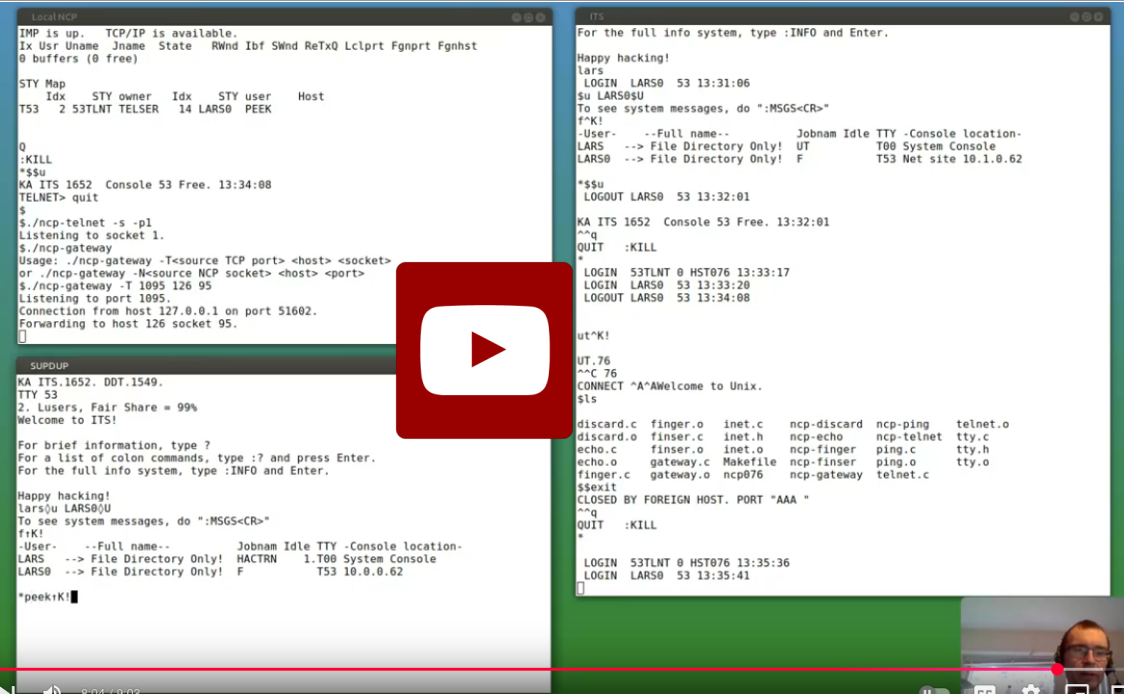 Lars also wrote a Network Control Program (NCP) for modern-day Linux, so any laptop can join Arpanet as a node as well and connect to the simulated Ancients.
Lars also wrote a Network Control Program (NCP) for modern-day Linux, so any laptop can join Arpanet as a node as well and connect to the simulated Ancients.
But we should take a step back. Although Arpanet got started in 1969, the breakthrough moment came at the so-called Arpanet Ball, a 1972 convention in Washington, D.C. There, lots of Teletypes were set up with an Arpanet connection, and a booklet was provided with – in short – interesting things to do on Arpanet, free for all to try out. It proved an eye-opener, and the rest is well-known history of course.

More will become possible, and Lars is very much looking for help to bring the P(i)DP-11 onto the revived Arpanet. Unix v6 and a dedicated OS called Elf are available to do so, and it looks perfectly achievable. TOPS-20 should also be possible to bring up at some point; and there’s some hope that even Multics might get an Arpanet NCP hook-up. With that, you’d quickly end up with the possibility of recreating a good part of 1972’s Arpanet.
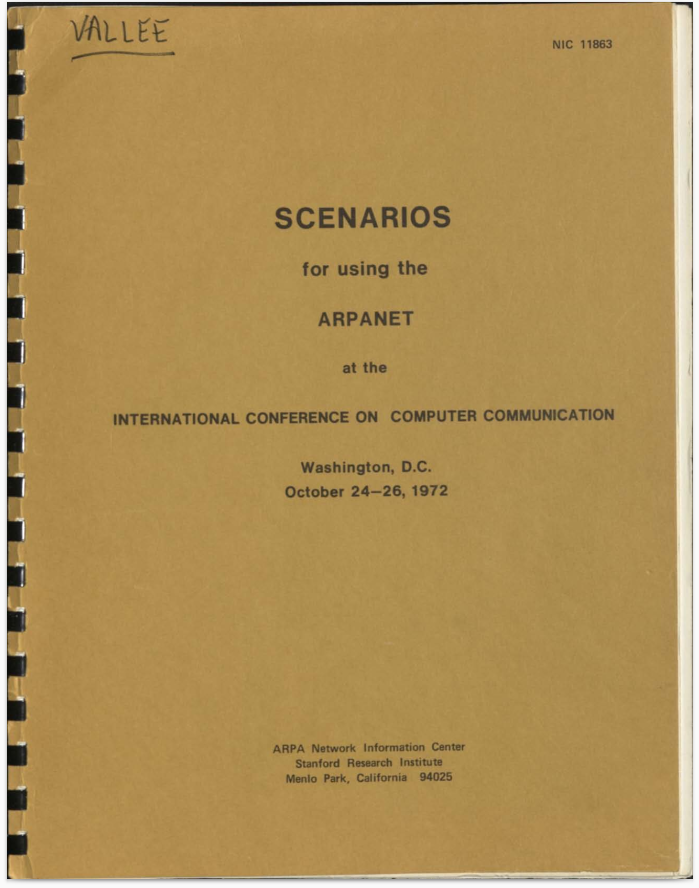
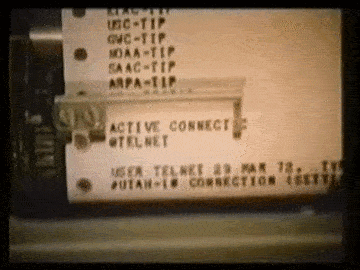
PiDP-10: Relive Micro-Soft Basic’s birth on the PDP-10
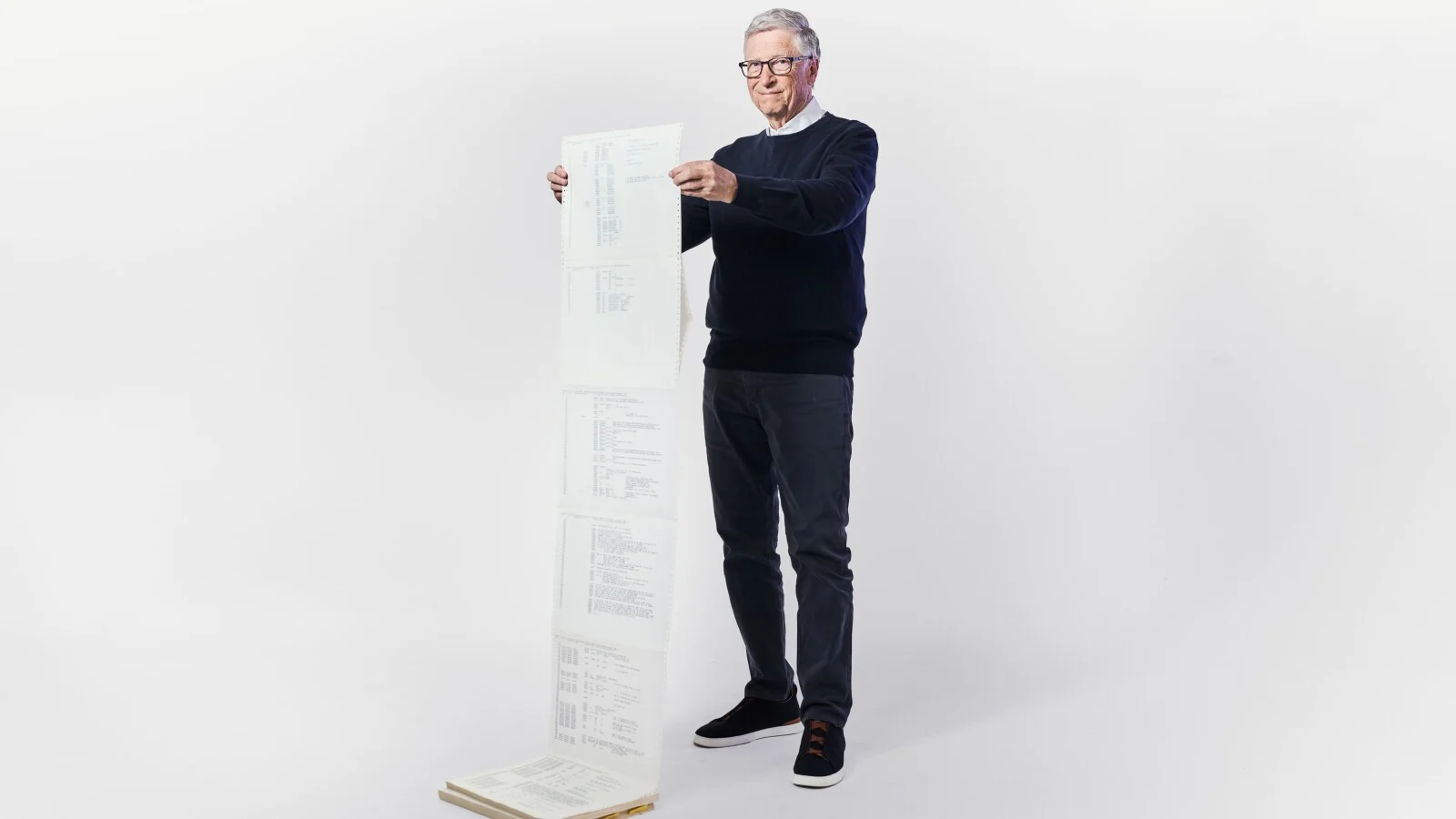 In early April, Bill Gates released the original source code for Micro-Soft BASIC. See here for an introduction. And now Stephen Jones did a nice Youtube on how to run it (here), on a PiDP-10, logged in to one of SDF’s online TOPS-10 accounts, in the MITS 8080 simulator. More info in the PiDP-10 Google Group thread.
In early April, Bill Gates released the original source code for Micro-Soft BASIC. See here for an introduction. And now Stephen Jones did a nice Youtube on how to run it (here), on a PiDP-10, logged in to one of SDF’s online TOPS-10 accounts, in the MITS 8080 simulator. More info in the PiDP-10 Google Group thread.
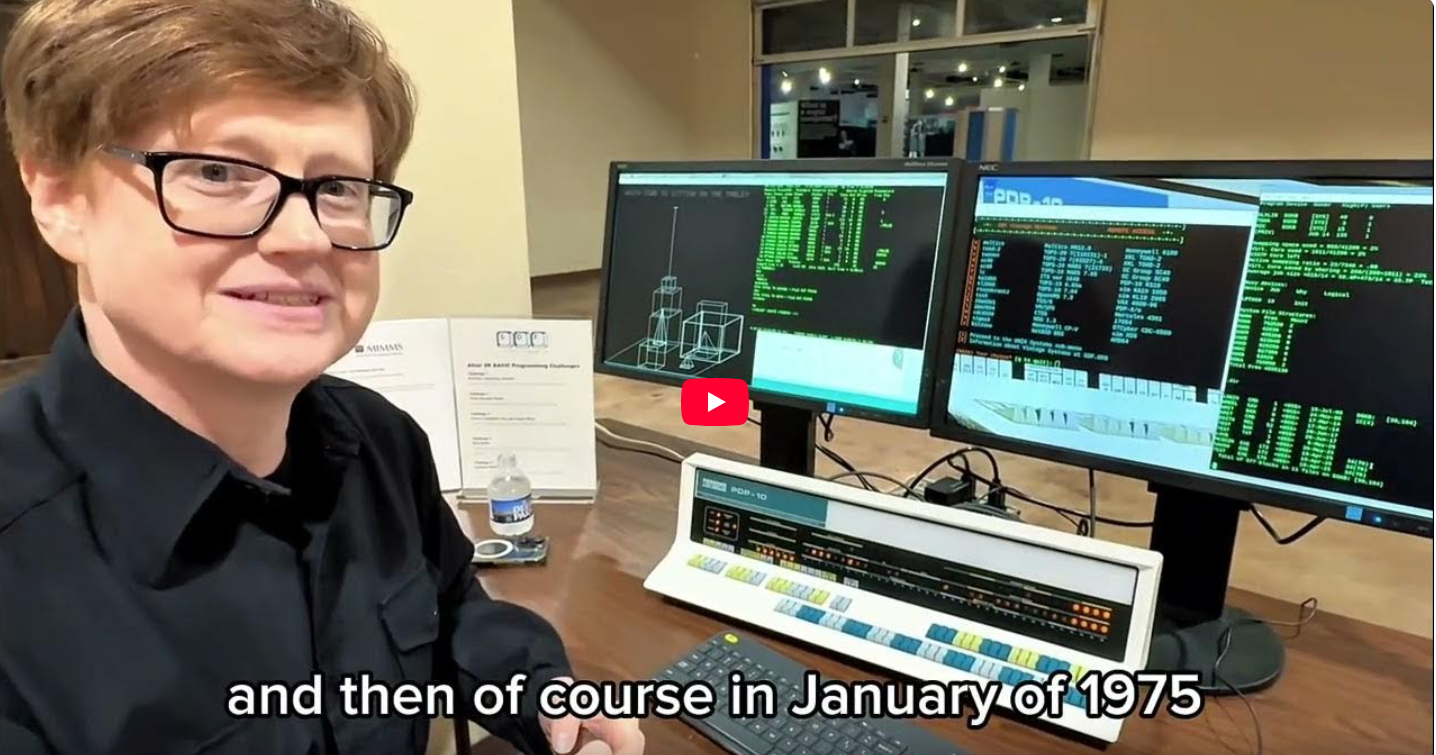
Reminder - Software updates for the PiDP-8 and 11
By now, we really hope you have moved to the new PiDP-11 software version on github. We’re also working on a package for the PiDP-8, that brings the same veneer and terminal goodies to that machine. As well comfortably switch in and out from the new, cycle-exact simulator released last year. Time! Just need more time!
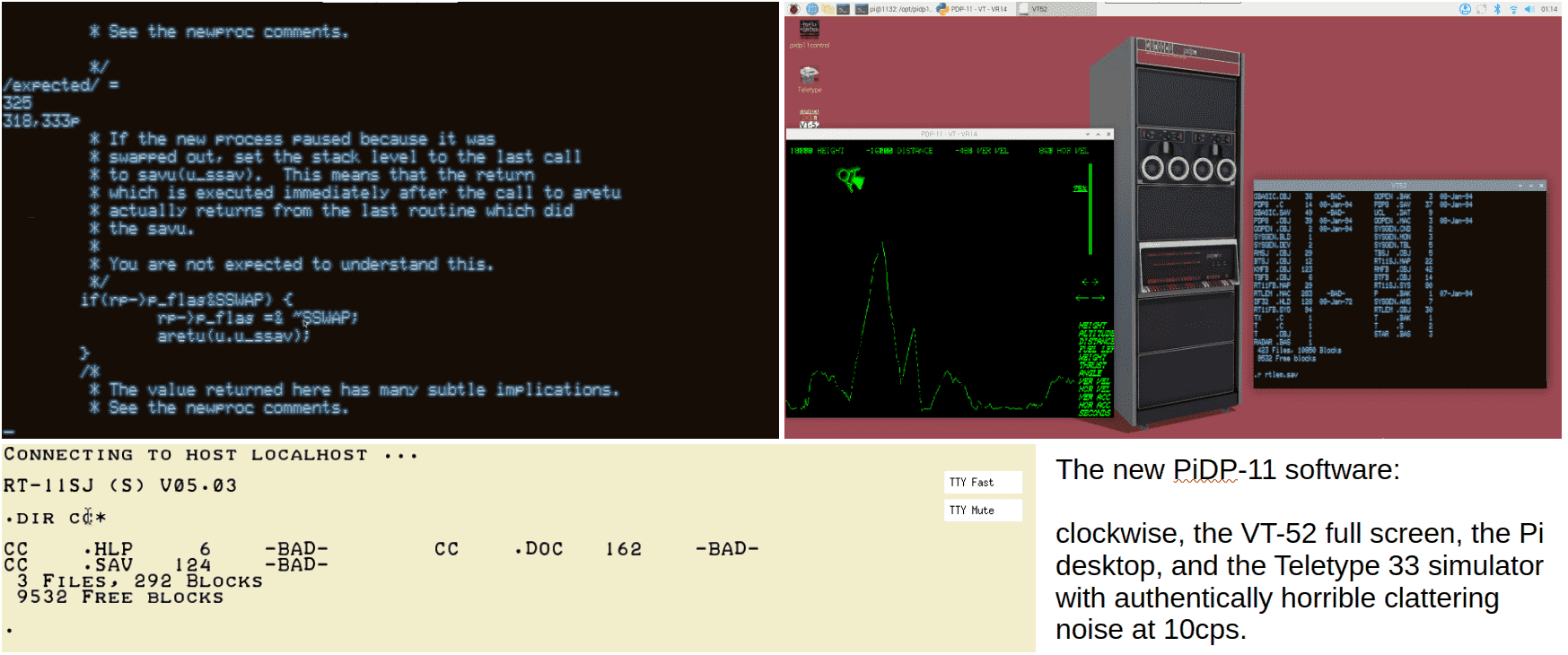

The LGP-30’s third coming
1959, 2016, 2026… This time, in kit form. Jürgen already made some great improvements on his original LittleGP-30 design of ten years ago, bringing the operator's panel very close to the original:
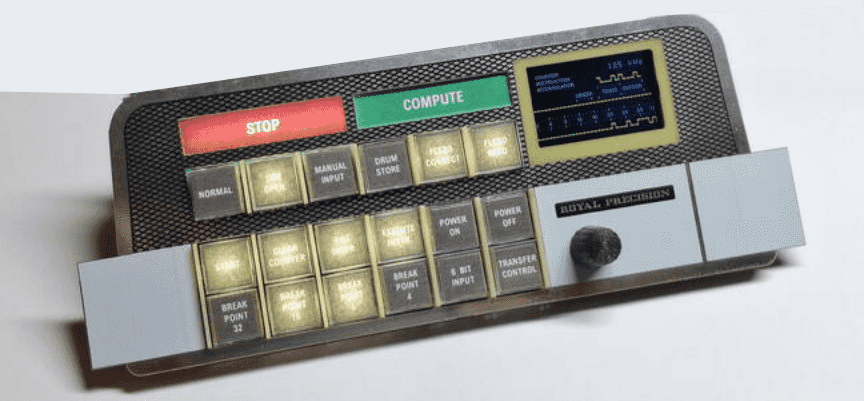 We found a sympathetic metalworking company owner, who insists he can make a proper, period-correct metal case for the machine. This will take some time, but really give a 1950s patina to the replica. This is the current CAD design for the machine:
We found a sympathetic metalworking company owner, who insists he can make a proper, period-correct metal case for the machine. This will take some time, but really give a 1950s patina to the replica. This is the current CAD design for the machine:
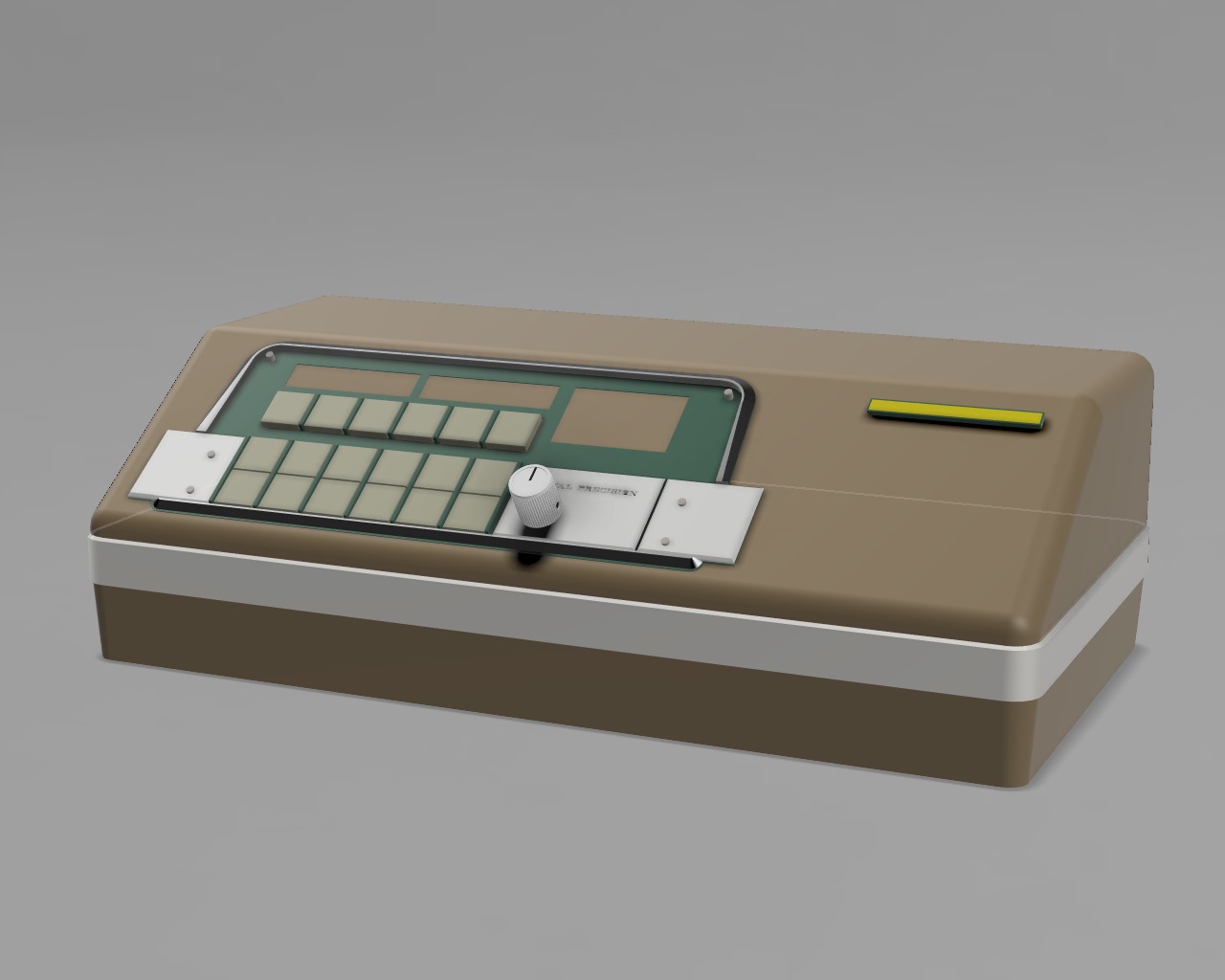 So, we're confident of delivering a LGP-30 "desk computer" on every desktop in 2026! And building up knowledge on metal parts and cases will be tremendously useful for future projects as well.
So, we're confident of delivering a LGP-30 "desk computer" on every desktop in 2026! And building up knowledge on metal parts and cases will be tremendously useful for future projects as well.

